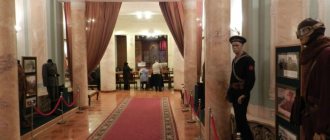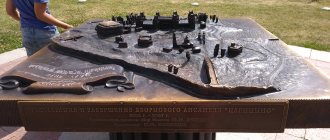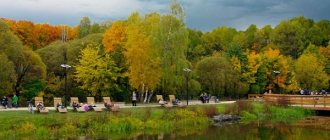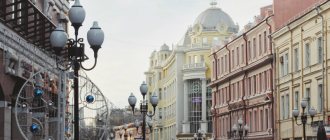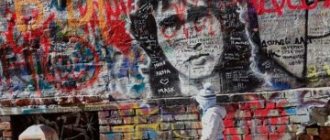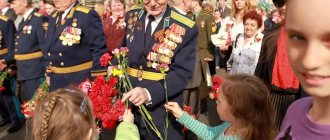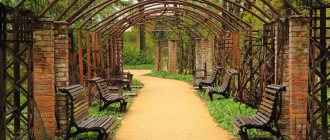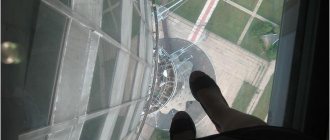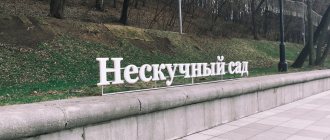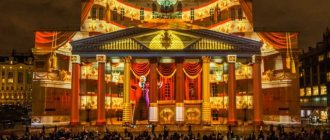In terms of polar opposites and categorical assessments, the Izmailovo Kremlin surpasses all other Moscow attractions. It is superior in the brightness of the colors of the buildings, their architectural diversity, and equally variegated content. They criticize the complex as implacably and enthusiastically as they extol it. They are sincerely surprised by the preferences of visitors who fall for the remake and entertainment against the backdrop of nearby authentic antiquities.
Such discord makes it difficult to understand what the Izmailovo Kremlin is for the capital, its population and guests. We have to start with a historical excursion; the local territory was inhabited back in the 14th century. The village of Izmailovo and the area around it received its name from the surname of the owner, who came from the nobles of the Golden Horde. Two centuries later, the owner was already the cousin of the first Romanov tsar, boyar Nikita Ivanovich. Izmailovo became the economic fiefdom of the dynasty, the front door was in Kolomenskoye.
From the history
Back in the early 90s of the 20th century, there was a vacant lot on the site of the entertainment center. In 1998, construction of the complex began, lasting almost 10 years until 2007.
The creation of the architectural structure was carried out on the basis of Vernissage, and the architectural structures of the royal residence in Izmailovo under Tsar Alexei Mikhailovich, the father of Peter the Great, were chosen as the main buildings.
The Izmailovo Kremlin does not claim historical value and is not an architectural monument; however, the atmosphere of Tsarist Russia has been created here, where you will feel the spirit of pre-Petrine Moscow.
The current Izmailovo Kremlin against a historical background
It is not known for certain what exactly was in the specific place where the Izmailovo Kremlin is now. The estate itself was on Serebryany Island, in the middle of the man-made Serebryano-Vinogradny Pond. Around were located royal farms, from gardens and greenhouses to barnyards and manufactories. Under Peter I, the importance of the estate was reduced to military and river maneuvers and idle pastime. Anna Ioannovna founded an extensive hunting park, Nicholas I built an almshouse for the heroes of 1812 close to the Intercession Cathedral.
From the Tsar's residence to Stalin's bunker
A grandiose construction project unfolded in Izmailovo in the 1930s, or rather, two construction projects, open and secret. Anticipating a war with Germany, a reserve command post with an underground bunker for the Supreme Commander-in-Chief was built here. They provided for the deployment of a tank unit, just in case, and brought in a road, still secret, and a metro. A good cover was the publicized target - the largest stadium in the world at that time. The capacity was planned for 120 thousand spectators, with the possibility of expanding to 200.
Stalin was impressed by the Olympic stadium built by Hitler in Berlin and certainly wanted to surpass it. The scale of the civil part of the construction more than masked the secret part. The triple line of tracks and three metro platforms and the unprecedented concentration of forces and resources did not arouse suspicion. A vast vacant lot instead of the eastern stand was planned as a parade ground; troops and armored vehicles were supposed to appear directly in front of the spectators. For half a century it remained empty, then the Cherkizovsky market appeared.
Recent history without completion
This nightmare phenomenon of the difficult 1990s arose thanks to the contacts of Telman Ismailov, who had a lot of money, with Luzhkov. The Azerbaijani businessman found a common language with the future mayor, but the land was federal. Even Bastrykin doesn’t want to know who was the final link that authorized the transfer. It is not known whether the funds of a businessman declared bankrupt and put on the international wanted list are invested in the Izmailovo Kremlin. All that is obvious is the vacant lot gaping next to the unfinished stadium.
The narrative misses another time period when the Izmailovo Kremlin could not appear. In preparation for the 1980 Moscow Olympics, it was originally planned to build a sports Village here. The reason for the change of location has been forgotten, but five existing high-rise buildings of the comfortable hotel complex have been preserved. There is all the necessary infrastructure here, at the southern end there is the Partizanskaya metro station. In general, the area now occupied by entertainment buildings and shopping arcades is very picturesque.
Izmailovo Kremlin from above and on the ground
Another high-rise photograph shows a general view of the area, with the Izmailovo Kremlin in the foreground. A non-sham, natural stone wall encloses the complex, leaving behind unfinished construction and deferred building materials. The review leaves the impression of a clear difference between the two parts of the development. The wood, which has begun to darken from precipitation, contrasts with the white stone beauty of the outer walls and towers. The bright colors of the buildings inside the western part are so varied that they dazzle your eyes.
The closest and previously founded neighbor of the Izmailovo Kremlin has the so-called Vernissage, in other words, an elite flea market. They sell unwanted items, antiques and works of art here. It began with an exhibition of abstract artists, in a more crowded place, demolished by bulldozers on the orders of Khrushchev. The event became the formal reason for the creation of the movement of the sixties, quiet opponents of the Soviet order. Further to the east there is a manor pond, an ancient cathedral with attached almshouses is visible.
The Izmailovo Kremlin does not yet have a western entrance, but it suggests itself; there is even an arch planned between the turrets. For now, access is provided by a bridge on the south side, from the hotel district, which is shown closer below. Apparently, the structure imitates the previously existing Resurrection Bridge across the Neglinnaya River, which flowed near the walls of the Moscow Kremlin. Its fragments are presented by the Moscow Underground Museum of Archeology, plus a painting by the younger Vasnetsov (Apollinaria). It was shown more clearly in the title photo.
Among the variety of establishments, the Izmailovo Kremlin also has a registry office offering ceremonial weddings. There is even a photography area, allowing you to capture the wedding procession against a varied and colorful backdrop. To decorate the ceremony, old anti-aircraft guns decorated with popular folk ornaments were installed here. The red and gold Khokhloma contrasts sharply with all the shades of blue characteristic of Gzhel painting.
Architectural diversity of the Izmailovo fortress
High-rise photographs covering the entire Izmailovo Kremlin show a variety of architectural designs, from construction to coloring. Photos from behind the fortress wall are no less bright and representative. If desired, individual elements of buildings can be captured from close positions, raising the lens to the heavens. The creators of the towers did not reproduce real buildings; they are all the fruit of architectural imagination. The tower shown close up was made with a minimal set of paints, like Gzhel painting.
Among the decorative elements, attention is drawn to tiles placed in a belt under the elongated window openings. The blue outlines of the architectural details of the building, essentially the main and only form of decoration, are strikingly different from the traditional palette of Russian towers. They use the entire gamut of colors, and in the most vibrant versions. The fragment chosen for demonstration is not only extremely varied in coloring, it also amazes with its bizarre contours.
In the Russian design, the column trunks are especially colorful, on which it is impossible to find a purely cylindrical section. All of them are transitions from circles to squares of different sizes, voluminous decorations - heroic helmets, women's kokoshniks. What is striking is the fundamentally different use of support pillars, which differs from other cultures. The Chinese, for example, only use smooth columns; they are painted in one color, usually red. The most you will see among the Greeks and Romans are vertical grooves (flutes).
A visual guide to the Izmailovsky Kremlin
A fairly informative guide for visitors to the Izmailovo Kremlin is almost correctly oriented to the cardinal points. In reality, the fortress walls, horizontal in the diagram, have a slope to the right, but it is small and can be neglected. All objects are divided into categories, each with its own numbering and explanation in the specification. Not only is it absolutely impossible to get lost, even a bad student in geography will find something of interest. Most of the buildings in the images are similar to the originals, as are other objects.
It is not necessary to delve into the relationships of different legal entities operating in this vast territory. However, this may be necessary when ordering a visit, in some cases mandatory, and various events. Since the Izmailovo Kremlin offers master classes, tastings and much more, the data on the left side of the stand may be needed. Those planning an independent visit can simply copy the diagram to their phone, then the movement will be more conscious.
Description
The Izmailovo Kremlin, as befits a fortress, is located on a hill, it is surrounded by a wooden fence and a stone wall with massive travel towers.
Approaching the Kremlin walls, you will immediately see white stone towers decorated with multi-colored tiles made using ancient technologies and designs.
The buildings of the complex were made according to drawings and sketches of the royal residence of the 16th–17th centuries, among them the most significant are the Palace of the Russian Meal and the Church of St. Nicholas.
Izmailovo District
The Izmailovo region, located northeast of Moscow, has some very interesting places to visit. Here you can plunge into different eras of Russian history:
- Modern era – the Kremlin and Izmailovsky market.
- Soviet era - Stalin's bunker.
- Romanov era – Izmailovo royal estate.
You can also stroll through the huge Izmailovsky Park, a vast green area with forest and many ponds.
Palace of Russian Meal in the Izmailovo Kremlin
The 17th century was the heyday of Russian wooden architecture, and many contemporaries of that time called the Palace of Tsar Alexei Mikhailovich in Kolomenskoye the eighth wonder of the world.
The Palace of the Russian Meal is an architectural fantasy that incorporates many elements of the royal palace in Kolomenskoye and the work of the talented master of graphics and icon painting of that time, Simon Ushakov.
The total area of refectories and taverns, designed to accommodate up to 1000 guests, is 6500 sq. m. meters. Dishes will be prepared for visitors according to ancient Russian recipes; traditional and modern Russian multinational cuisine is also presented.
In total, the palace has 10 banquet halls, designed for different numbers of guests, the largest and most luxurious of the halls is the Tsarsky hall, which can accommodate up to 500 people.
From the balconies, staircases and walkways of the royal palace there is a beautiful view of the square, where the main events take place and holidays are held. With the help of a covered gallery, the Palace of Russian Meal is connected to the travel tower.
Decorative painting on wood is used in the interior decoration, and in the basement of the palace you will see rooms stylized as a wine cellar and torture chambers.
From the basement, an underground passage leads to the Church of St. Nicholas.
Restaurants and cafes
Guests of the Kremlin are greeted by a luxurious tower, which is called the Palace of Russian Meal. When designing the building, the architects tried to embody the traditions of wooden architecture of the 17th century. And as prototypes they used wooden towers that were built for the Russian Tsar Alexei Mikhailovich.
Art-Kremlin gallery building
The Palace of Russian Meal is beautiful not only from the outside. It has luxurious interiors decorated in the style of folk crafts. Palekh and Khokhloma paintings adorn the walls, and the rooms contain sculptures and carved furniture. Today, the picturesque state rooms of the palace are used for weddings and family celebrations.
Several cafes for adults and children are open in the Izmailovo Kremlin. In them, visitors are treated to pancakes, homemade dumplings, meat in pots and dishes prepared from pike perch and poultry. For drinks, guests are offered soft drinks made from fresh berries.
Young guests of the Kremlin can dine in special children's cafes. Animators work in “Kolobok” and “Cat House”, and you can always find pies, fresh pastries and sweets on the menu.
Church of St. Nicholas
Church of St. Nicholas
Opposite the Palace there is a functioning wooden church of St. Nicholas, founded on September 5, 1997. It opened for parishioners in 2000 and is the courtyard of the Moscow St. Danilov Monastery. This is the tallest wooden temple in Russia, its height is 46 meters.
On Sundays and holidays, divine services are held in the church, as well as the sacraments of Baptism and Wedding. Particles of the relics of the holy saints Prince Peter and Princess Fevronia, the Murom wonderworkers, are kept here.
There is a Sunday school, church singing courses and a church floristry school. From the observation deck of the temple there is a beautiful view of the Serebryano-Vinogradny Pond and Silver Island, the Intercession Cathedral and other ancient buildings. Wedding couples release doves into the sky from the observation deck.
A little history
The founders of the project for a grandiose entertainment and historical center were Alexander Fedorovich Ushakov and Maria Viktorovna Alekseeva. At the initiative of Ushakov and the decision of the Moscow authorities, the former wasteland on the territory once occupied by the residence of the family of the Russian Romanov Tsars began to be transformed. In 1998, construction work began with the construction of a wooden temple, which, according to ancient tradition, was to become the center of the Kremlin complex. After construction was completed, the temple was consecrated and assigned to the courtyard of one of the Moscow monasteries.
Considering the fact that the Izmailovo Kremlin was initially important as a tourist attraction, it was decided to create cultural and entertainment centers on its basis, a visit to which literally transports the visitor to the era of Tsarist Russia and demonstrates all the beauty and tranquility of that period
Interesting fact: in 2005, when the construction of the Kremlin in Izmailovo complex was close to completion, a severe fire engulfed the area. It destroyed most of the buildings, including Vernissage, but, by an amazing coincidence, the flames were stopped almost in front of the temple, keeping it intact.
Muscovites still remember the magnificent celebration in honor of the opening of the Izmailovo Kremlin in 2007. Over the ten-year history of its existence, the cultural complex has turned into one of the favorite places for residents of the capital and tourists. Everyone will find something to their liking here - walks and acquaintance with architectural sights, excursions to numerous museums, visits to the Church of St. Nicholas the Wonderworker, the Palace of Russian Meal, an observation deck, shopping in the Vernissage shopping arcade, training in master classes on the manufacture of handicrafts, participation in festivities dedicated to national and calendar holidays, festivals and show programs for both children and adults.
Workshops and shops
Behind the Church of St. Nicholas there is a small courtyard with a gazebo and a pond with fountains and a bridge. The huts surrounding the courtyard housed workshops and shops, including a blacksmith's yard, workshops for wicker weaving and pottery, artistic wood carving and a weaving workshop.
Here you can admire the skills of artisans, or you can get creative yourself: at the Danila Lyceum you will make a beautiful candle or a rag doll, make a pot and paint a matryoshka doll or a Dymkovo toy, learn weaving and Gzhel painting, and children will be interested in seeing how soap is made and make chocolate.
You will visit a real forge and make a souvenir yourself - a coin or a real horseshoe for good luck.
The shops here are also unusual, where you can buy a variety of souvenirs, from felt boots to chests for the bride’s dowry.
Museums, they are also entertainment establishments
The variety and colorfulness of its buildings, food and trade alone would hardly have ensured the Izmailovo Kremlin's current popularity. More than a dozen establishments on the territory call themselves museums, have exhibitions, and at the same time provide other services. First of all, this is initiation into the secrets of folk crafts and crafts, making samples under the guidance of an instructor. Some of the activities have age restrictions due to compliance with the safety requirements of young participants.
Museums of the essentials
Most human civilizations arose on the basis of a community of activities that required attachment to a specific area. For the Slavic tribes, the unifying factor was agriculture, its main subject being grain crops. An important condition for the existence of human populations was the ability to defend themselves from a hostile environment, surviving in a cruel world. Hard work and military service required periods of rest. Museums of the first category, according to our own classification, are devoted to the listed points.
Bread Museum in the Izmailovo Kremlin
It seems quite natural to dedicate a separate exhibition to a traditional food product. What is on display, of course, is not only and not so much the products themselves, but equipment for processing grain and baking from flour dough. It is interesting to see the ancient tools used by distant ancestors and compare them with modern equipment. To introduce readers of articles about the Izmailovo Kremlin to the local bread museum, a fragment of the exhibition with the most dramatic content was selected.
The Leningrad blockade, the anniversary of whose breakthrough was celebrated in 2018, was one of the most tense and difficult periods in Russian history. The encirclement left only an air route for supplying food; later they began to use the ice road, and in the summer - river boats. Unbearable hunger caused numerous deaths; the tragic situation of families was aggravated by their own helplessness. The photo shows the daily food allowance on the scale; on the stand you can see the figures for workers and other categories.
In addition to the exhibition display, the Bread Museum offers master classes in bread cooking. The Izmailovo Kremlin will not turn into confectioners or bakers, but the children will receive the skills they need in life. There is no need to be afraid of burns from the Russian stove; it is here as a decoration; in reality, an ordinary electric oven is used. The main, practically the only, weapon used is a basic wooden rolling pin. No one has ever suffered from it, except for guilty husbands; it is useful to know how to handle it.
Museum of 20th Century Weapons
Small in terms of exhibition, but quite representative, the museum of weapons of the last century cannot be compared with large-scale collections. There are no samples of military equipment here that require much more space for display than the Izmailovo Kremlin has allocated. The local chamber museum presents exclusively small arms for individual use. Most of the samples are familiar at least to the male population, from war and gangster films - to everyone else. The collection of weapon cartridges is interesting, extensive and informative.
Rifles, machine guns and pistols can not only be touched, but also partially disassembled if you have the skills. Practice with weapons is limited to this; there are no master classes. Some people will want to remember their youth in the army, this is not forbidden. You can look through the manuals for weapons posted on the windowsill. The weapon is absolutely safe; a shot is impossible even with a loaded cartridge. Apparently, before the organization of the shooting range, the management of the establishment was either not mature or did not find the interest of the landlord.
Vodka History Museum
The Museum of the History of the National Strong Drink does not reflect the decline in its popularity, as advertised by the Ministry of Health. The establishment has to balance on a precarious line between banning alcohol advertising and displaying historical paraphernalia. As long as the Izmailovo Kremlin is not reproached for violations, the master of moonshine classes is enough without it. The museum is proud and displays a copy of Mendeleev’s dissertation, presenting the great chemist as the author of the vodka recipe. Meanwhile, he studied the mutual solubility of liquids of different densities.
A captivating display with a gramophone and a stuffed bear, a huge bottle and glasses on a patterned tablecloth is an enticing paraphernalia. The Vodka Museum legally conducts paid alcohol tastings with the appropriate permission. There is a separate room for them, light snacks and a real feast are available. It is not known how popular these events are compared to viewing the exhibits. However, the ancient distillation equipment and historical containers are certainly interesting.
Museums of essential crafts and history
This is how we formulated the next museum category from among those that are sheltered by the Izmailovo Kremlin. Abraham Maslow's theory of motivation in the hierarchy of human needs considers physiological needs to be the base of the pyramid, followed by safety. These primary needs are food and water, shelter and the ability to defend it. Fundamental human crafts are aimed precisely at these purposes, which is why pottery and blacksmithing were included here. It is equally important to remember previous experience, hence history.
Pottery master class
The Izmailovo Kremlin demonstrates ceramic production in a pottery workshop, in inspection formats and master classes. Often the molding table and pottery wheel are taken outside, and the craftsman makes the products in front of visitors. The workshop is located in the basement of the building, where master classes are held. Two machines are installed side by side so that the student and teacher work in parallel. There, the products are painted, dried and fired twice. The most representative exposure is in a clean room.
The urgency of human need for vessels is now absolutely not felt due to their enormous numbers and diversity. However, this was not always the case; primitive people were content with random objects. The potter's wheel not only solved the problem of dishes, it is considered the ancestor of cart wheels. Even the chandelier in the front room of the workshop is made from a cart wheel, and another one leans against the table. There is no need to describe the variety and genuine beauty of the products on display; it is obvious in the photo.
Blacksmithing in the Izmailovo Kremlin
The Izmailovsky Kremlin provided the forge with fire-safe premises, but they also organize street demonstrations. The attack was met near the vodka museum, perhaps due to the high popularity of this establishment. The collapsible forge is distinguished by its miniature toy size; it is much smaller than a camp grill. The fire is ignited by a very small fire, supported by air blast, and this is one of the purposes of the demonstration. It is impossible to seriously forge on the street; this is practiced only during annual festivals.
A forge anvil is a specially made figured casting weighing no less than fifty kilograms. They attach it to a large wooden block with wedges and metal chains. The anvil is not moved inside the workshop, much less taken outside. So the demonstration of blacksmithing is purely fake, you will only see the hot end of the rod. The blacksmith even neglects eye protection, does not wear mittens, deliberately grabbing only the tip of the workpiece. This is the only way the mites will not burn your bare palm, but for lured passers-by it seems like a miracle.
Plasticine history of humanity
A private collection of figurines of historical characters made from ordinary plasticine is interesting not for this ordinary material, but for its personalities. The Museum of Miniatures World History in Plasticine presents the main figures of mankind from early antiquity. There are also literary characters in the collection that are as entrenched as real ones. They were created half a century ago by the hands of amateur sculptors who sculpted as a hobby. The son of one of the first authors preserved and continued the collection, adding previously forbidden figures of the White movement.
He is also one of the leading master classes in modeling, teaching children the essential secrets of seemingly simple creativity. The museum poster claims that the Izmailovo Kremlin represents the only such collection in the country. For visitor feedback there is a blackboard and chalk; on the second board there are stucco crafts from class participants. The Museum of Plasticine Miniatures has launched the production of plastic cards with photos of its exhibits, with a magnetic strip on the back. Decorating refrigerators like this has become a paramount hobby.
Other museums and entertainment
The principle of compiling this section about the museum economy, which fills the Izmailovo Kremlin to increase attendance, is obvious. Here are those that were not included in the first two sections, but not because of the low significance or boringness of the expositions. They just decided not to inflate the first categories, limiting themselves to three positions in each. Quite by chance, the same amount is left for the last category, which is where all the new items will end up. For now, we will briefly talk about those already visited, arranging them in random order.
Museum of Russian Folk Toys
The Toy Museum is truly one of the most serious among all, to which the Izmailovo Kremlin has provided exhibition space. According to the already mentioned and generally accepted theory of Maslow, the primary human needs include reproduction, that is, sex. This implies the importance of children, education and training; museum exhibits play an important role in this. The richness of traditions of folk toys, the variety of materials used and decoration techniques are a fertile field for museum workers.
We will not recall the names of villages and other settlements that gave their names to world-famous toy brands. They are already well-known; explanatory signs will help those who forget. However, among the exhibits there are many products from local craftsmen who conduct master classes. Everyone, regardless of age (within reasonable limits), can take an active part in them. This could be making dolls, sewing their clothes, or all together, painting a matryoshka blank and other options.
Princess Olga's candle factory
The dream of the priest from the time of Lenin's NEP, Father Fyodor from the immortal Twelve Chairs, was realized. Already in the new Russia, the Izmailovo Kremlin helped the founder of the enterprise to organize the production, demonstration and sale of candles. Inexpensive and elegant gifts for any occasion are always ready here, some are already packaged. The goods simultaneously serve as exhibits of a small museum with an original name. Some additions to the exhibition are accessories, candlesticks, candelabra and stands.
The hostess personally demonstrates the technology for decorating candle blanks at master classes. Upon request, he can help implement the visitor’s own idea, proposed in a draft version. Multi-colored products are decorated after dipping a white hexagonal blank into a melt of colored paraffins alternately with white. After a sharp dip in cold water, there is about a quarter of an hour when the petals are cut and bent. Then the material becomes brittle; processing must be completed before that.
Sweet marzipan sculpture in the Izmailovo Kremlin
The workshop called Sladkarnya specializes in marzipan modeling, popular due to the specific taste of the products. Master classes can be attended without registration, immediately upon arrival, if there are places at the table. This exquisite sweetness, known since the Middle Ages, was once a pharmaceutical product and was classified as a medicine. Marzipan is plastic like ordinary plasticine, waste from crafts is edible, and over time the products turn to stone. The rich color palette of raw materials allows you to diversify your works.
The low prevalence of marzipan modeling is explained by the relative high cost of a mixture of almond flour and sugar. The finished products presented in the shop window along with kits for home exercises are also not cheap. The workshop operates both in the premises provided by the Izmailovo Kremlin, but also on the customer’s premises. A master class can be ordered for any school group, directly at the educational institution. In addition to the sweetness of crafts, modeling develops fine motor skills and develops artistic taste.
Matrimonial Palace
Since August 2009, a Wedding Palace - the Palace of Happiness - has opened on the territory of the complex, where marriages are registered, and a wedding agency has also been located, offering to celebrate wedding anniversaries. Nearby there is a tree with a lot of padlocks - symbols of happiness - apparently, many couples got married here!
After registering the marriage in the registry office, you can get married in the Church of St. Nicholas, and the wedding can be organized with all the ancient rituals and festivities, then it will be called the Royal one.
Sights of the Izmailovo Kremlin
In addition to the flea market, which is located outside the perimeter, various festivals are held here. For example, when we had the pleasure of visiting this place, everyone wore costumes of all sorts of elves, scarecrows and characters from Harry Potter.
Separately, we need to dwell on the Kremlin museums. For convenience, we present them in a list. Entrance to museums is paid.
Map of the Kremlin (enlarges when clicked)
Carrot and Stick Museum
As is already clear from the title, we will talk about various punishments: punishments for crimes, for drunkenness, for smoking, gossip, and so on. It is better not to go with small children.
In addition to the punishment room, there is a room of abandoned dolls and forgotten things and a pleasure room, where you will be invited to take a photo with a live rabbit and a rooster.
Entrance fee: 240 rub.
Vernissage in Izmailovo
Next to the Izmailovo Kremlin is Vernissage, the largest exhibition-fair of souvenirs and antiques, art objects, folk crafts and crafts.
Vernissage attracts folk craftsmen and artists from all over Russia. Here you can admire works of art and buy handicrafts.
There are streets here where items of one craft are sold - Silver and Antique Rows, Artists' Alley and Crafts Street, and there are counters where everything is sold.
How to get to the Izmailovsky Kremlin
The Izmailovo Kremlin is located in the east of Moscow. It can be reached relatively easily by public transport. Perhaps one of the most convenient options is to take the metro. The closest station to the Izmailovsky Kremlin is the Partizanskaya station. This is the blue Arbat-Pokrovskaya line. If you are traveling from the center, it is most convenient to get on at the Kyiv, Arbatskaya and Ploshchad Revolyutsii stations. Travel time from the center by metro will take literally 20 minutes. When leaving the Partizanskaya metro station, you should turn left and go straight to the entrance to the territory of the Izmailovsky Kremlin (in the opposite direction from Izmailovsky Park). The exact address of the place: Izmailovskoye Shosse, 73zh.
By car you can get to the Izmailovsky Kremlin from the center of Moscow along Entuziastov Highway; the distance from Red Square will be approximately 16-17 km. Opposite the Kremlin there is free public parking where you can leave your car while walking.
Izmailovo Kremlin
Museums and excursions
The Kremlin in Izmailovo complex unites several museums on its territory. Some of them directly relate to Russian history: the Bread Museum, the Museum of the History of Vodka, the Living Museum of Folk Arts, and the Museum of the History of the Russian Navy. Here, guests are invited to visit unusual museum exhibitions: marshmallows, chocolate, naughty children, and admire miniature exhibits united by the theme “World History in Plasticine.”
Somewhat apart is the Museum of the History of Vodka, which tells the story of the 500-year history of this drink. The collection includes more than 600 exhibits: labels and bottles of various shapes, the first distillation apparatus (XV century), recipes from the 18th century, advertising posters and, of course, various types of vodka.
It is worth considering: the favorite place of the youngest guests of the Izmailovo Kremlin is the Moscow Museum of Animation, where characters from fairy tales created at Soyuzmultfilm are presented. Older children are happy to come to the museum of naughty children, where they can fool around by painting a wall or fence, make a well-aimed shot with a slingshot, and then on an excursion learn about how good it is to be a cultured person and know the basic rules of etiquette.
Parking lot near the Izmailovo Kremlin in Moscow
(year 2012)
Dimensions in centimeters are for reference only and are printed at 300 dpi. Purchased files are provided in JPEG format.
¹ The Standard License permits the image to be published in a limited edition, once, as an illustration for a news story or as the cover of a printed publication;
² The extended license allows other uses, including in advertising, packaging, website design, and so on;
³ License Printing for private purposes allows the use of the image in the design of private interiors and for printing for personal use in a circulation of no more than five copies.
* Image packages provide significant savings when purchasing a large number of works ()
Original size: 3685×2433 pixels. (9 MP)
The price indicated in the table consists of the cost of a license to use the image (75% of the total cost) and the cost of photo bank services (25% of the total cost). This division appears only in the issued invoices and in the final documents (agreements, acts, registers); in the rest of the photo bank interface, the full amounts payable are always present.
Attention! The use of works from the photo bank is possible only after their purchase. Any other use (including for non-commercial purposes and with reference to the photo bank) is prohibited and prosecuted by law.
Why Izmailovo Kremlin, Moscow - here is the Russian architecture of the Middle Ages recreated in the 21st century with fabulous decorations, here is a wedding palace, here is a cultural and entertainment complex where you can spend the whole day with pleasure visiting museums and traditional workshops, as well as a market for folk art and antiques and souvenirs “Vernissage in Izmailovo”.
Vernissage
A huge territory of the Kremlin complex is reserved for Vernissage. There are numerous shopping arcades, shops, shops where they sell not only handicrafts, but also souvenirs and works of painting.
Vernissage has long attracted the attention of foreigners, who can buy here typical Russian souvenirs: nesting dolls, dolls, Easter eggs, crystal, boxes and other products that impress with their size, decor and magnificent appearance.
On Crafts Street there is an abundance of goods traditionally made in Rus' from ancient times to the present day. All kinds of painted toys, dishes, household items, carved, wicker, embroidered, knitted products are brought to the fair from Sergiev Posad, Zhostovo, Gzhel and other places where folk crafts are the main sources of life.
The Artists' Alley is also worth a visit. It offers for sale both paintings by amateurs - beginners in painting, and paintings by honored masters of brush and canvas.
Expert advice: you can’t ignore the most colorful places of the Vernissage - the flea market and the rows of antique goods. Anyone interested in history will find something interesting to add to their favorite collections.
